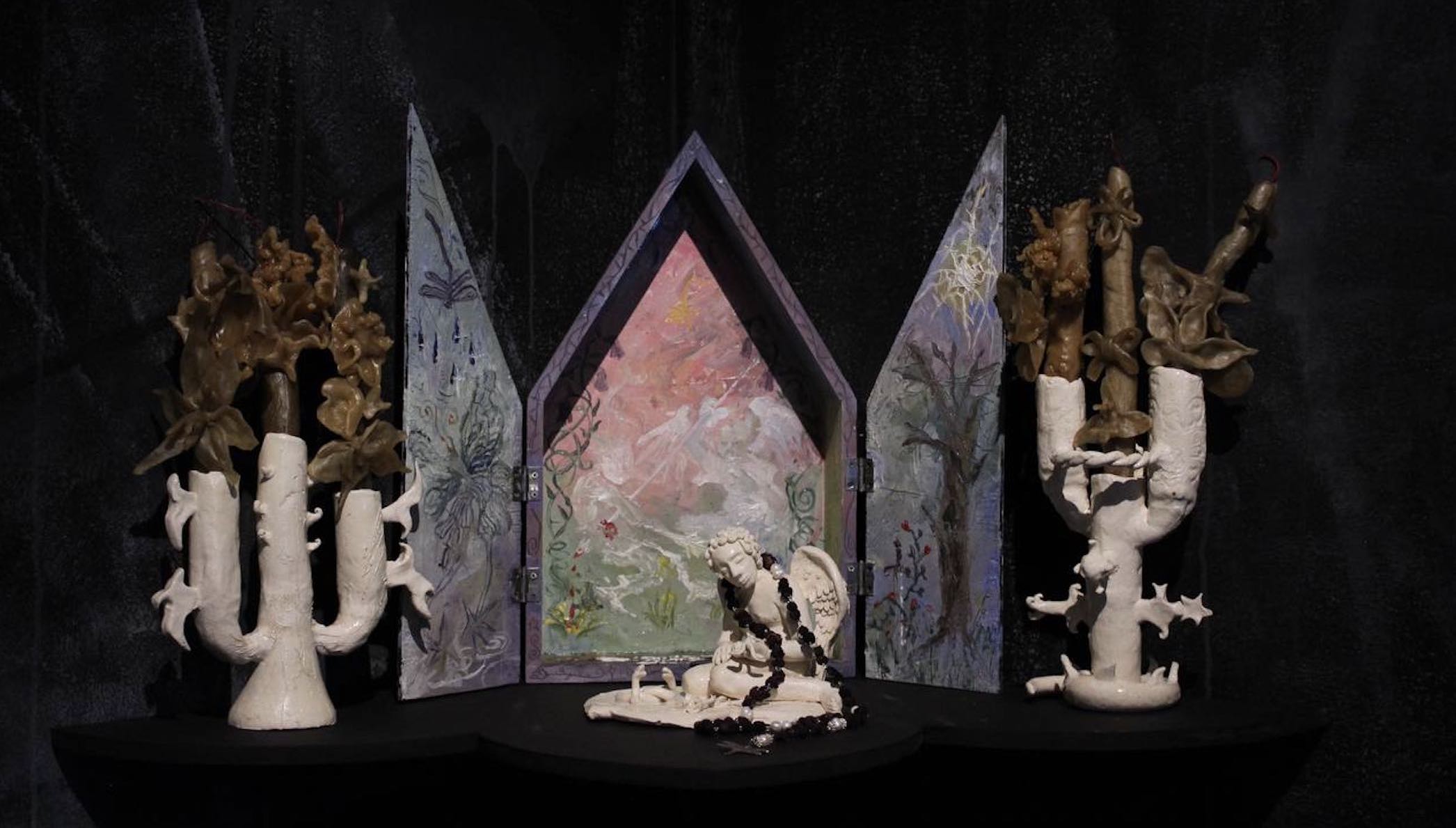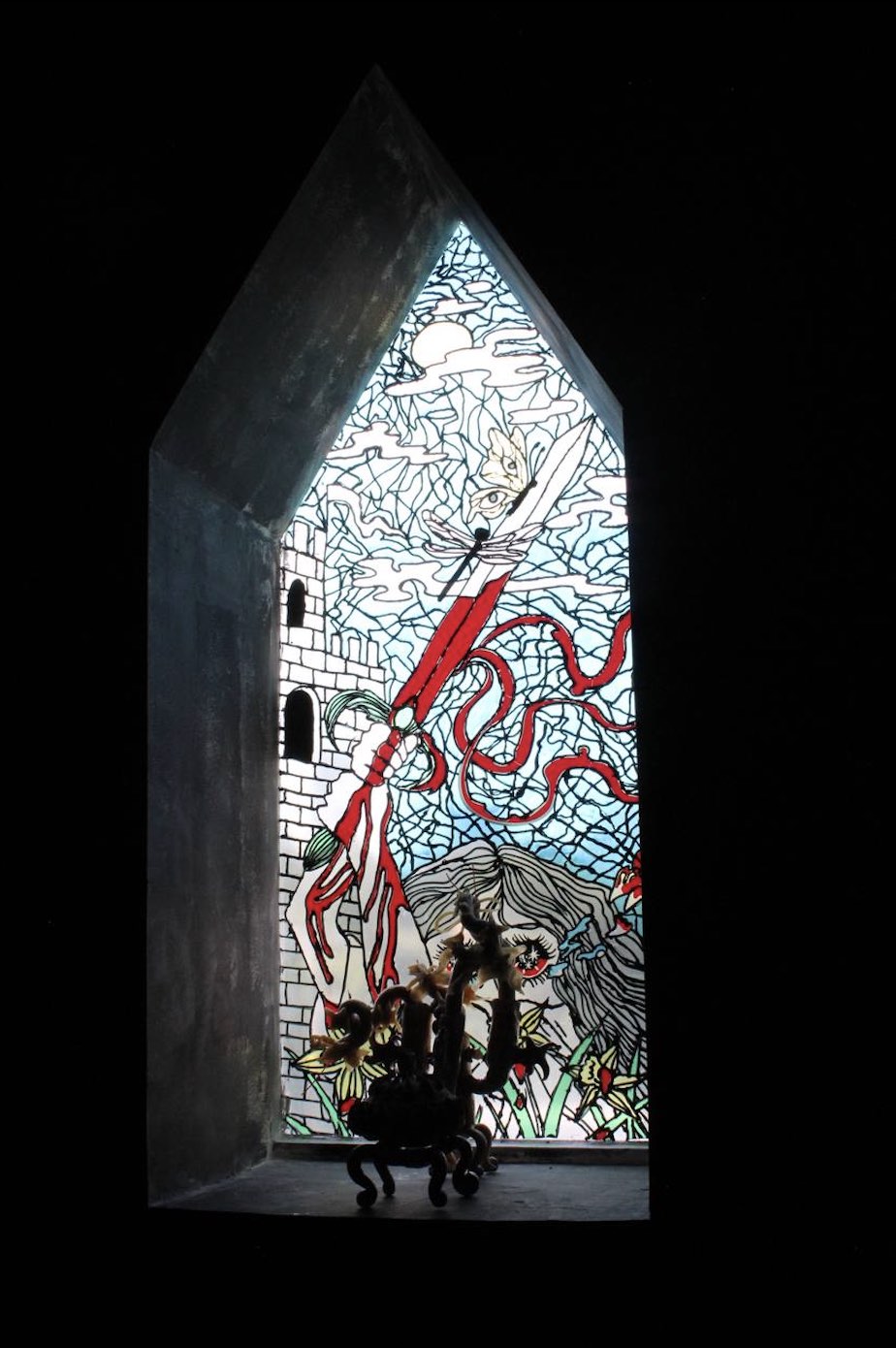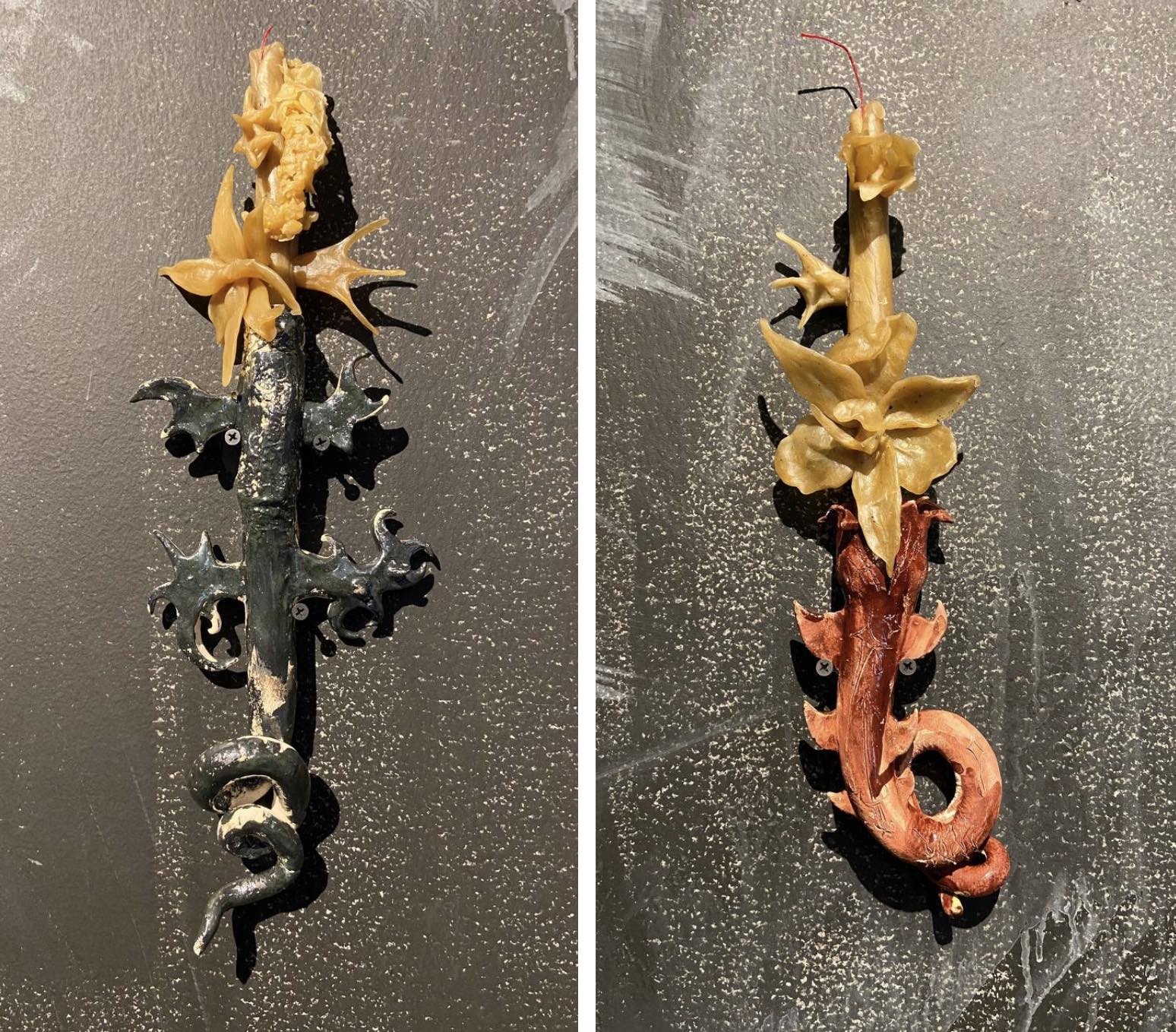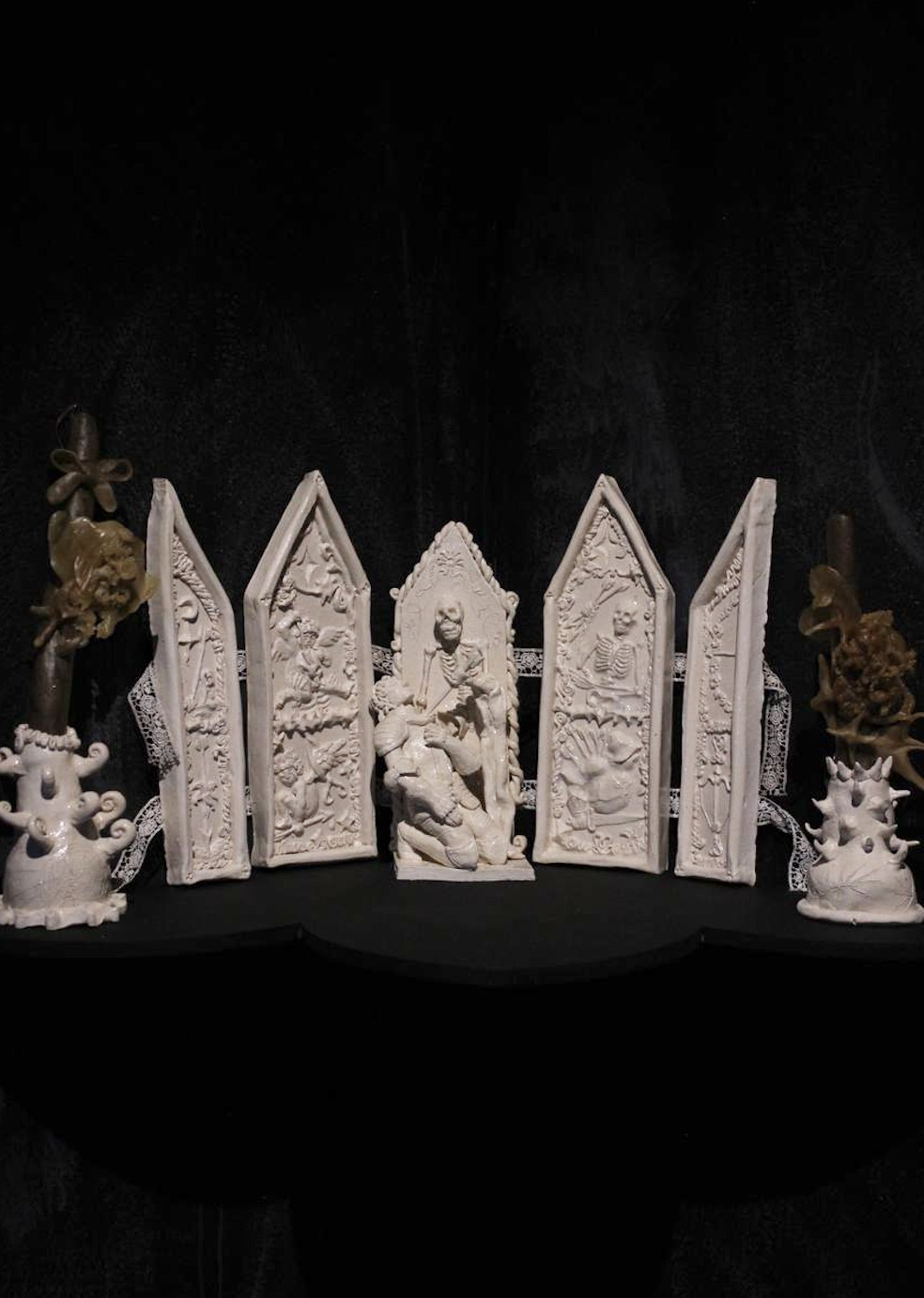
Review
I’m still alive, are you?: Sil Cerviño
by Verana Codina
'Emptiness is the Color of a Clear Sky' at the Museo de Arte Carrillo Gil
Reading time
5 min
As part of MACG PRESENTS, a program dedicated to the development and exhibition of projects by artists under 30, the Museo de Arte Carrillo Gil opened El vacío es del color de un cielo despejado (Emptiness is the Color of a Clear Sky), the most recent solo exhibition by Sil Cerviño.
The exhibition’s premise suggests the arrival of “the day when the world no longer belongs to us,” the imminent moment of human extinction where the only trace of our presence is found in the objects we leave behind. A world-without-us*1 that, despite everything today, I feel to be far away, and yet on the contrary seems more and more with-us. It only takes one look at our cell phones and exploring TikTok to measure how many of us inhabit the earth at the same time.
Sil Cerviño’s work is located within this internet hyperconnectivity, saturated with images and symbols, materials, formats, techniques, and above all anachronistic references, where it’s possible to interpolate different temporalities. In this case, the Middle Ages with contemporary components from manga, anime, horror movies, video games, and more.

The exhibition room is dark yet avidly lit by a small alcove of light that penetrates through a hand-drawn and hand-painted illusory stained-glass window. Strategically placed objects hang from walls or stand on ledges angled at the room’s three corners. In the middle, a mannequin dressed in a bridal gown reclines on a bed of branches and trunks; above, a curtain of chains and charms support the lid of a translucent coffin. The experience’s evocation is obvious: the artist offers a gloomy, spiritualistic, and sometimes religiously mystical environment, such as that of a pantheon or chapel. The re-creation of the experience is undeniable, but there is something that interrupts the setting’s fidelity, namely that when perusing the pieces we find that the represented shapes and motifs do not coincide with the object’s original nature or manufacture: ceramic altarpieces showing a porcelain-like knight sworded by Death, surrounded by vegetation and pagan motifs; chandeliers carrying candles molded in the shapes of bows, flowers, and creatures (?); weapons whose ornamental blades decorate but do not cut.

The intersection of different aesthetics in Silvan’s work is a symptom of their own context, where there’s an accelerationism in the assimilation of multiple perspectives, which come together to explore or debate the same topic of interest via social media or opinion forums, so that when they become popular they end up flooding the digital imagination of certain groups or niches. Thus, remixes of the same fashion begin to emerge and converge, feeding on each other until they evolve into a new thing, a new core.
Take, for example, the clean girl aesthetic, a microtrend that was stripped of its original meaning—essentially consisting of a makeup/no-makeup look, preppy clothes, polished manicure, simple interior design, and minimal decoration—in order to make content that distorts the original stereotype, showing exactly its counterpart: grungy makeup, disheveled style, clothes that are ripped, torn, or stained, teenage rooms full of posters on their walls. The trend begins one way, soon becomes saturated, mutates, and then goes viral; we become complicit in the deviation of the original sign, in the direction of one that’s absurd, lacking any coherence when compared with its source.

It’s within this incoherence that I like to think of Sil’s work. It takes narratives and symbols—that were once sacred—to profane them and thus situate itself in a new aesthetic, something like medievalcore. From what we know about medieval aesthetics—here understanding aesthetics as the study of beauty—it is that, despite not having been instituted as a discipline at the time, there are various religious writings in which it is insinuated that beauty should be harmonious and orderly, and that an aesthetic judgment regarding an object has to be made in relation to what it should or should not be: according to whether it sticks to its original nature or not. But what stands further from its task than a transparent coffin or a blunt sword? Or a woman-knight as the central figure of an ecclesiastical stained-glass window that’s otherwise simulated?
By taking elements from this historical period and combining them with contemporary ones, “mixing the plausible with the ridiculous”—as Gaby Cepeda puts it in the gallery text—the artist precisely operates with a basis in, while also canceling, the purity of their primary aesthetics, opening the way to the further possibilities of a remix, an inherent quality of the “core era.”
The interesting thing is that even in saturation, Silvan manages to produce an environment that undoubtedly fosters a moment of contemplation—one that’s almost monastic, just like that suggested in the room—where there’s space for introspection and slowing down: a respite from the mediatic horror vacui to which we are daily exposed.
A possible land emptied of us cannot exist without already having been hyperinhabited. Luckily, although the possibility of decline is inescapable, we continue living and willing to contemplate annihilation.
Translated to English by Byron Davies
*1: Gaby Cepeda. El vacío es del color de un cielo despejado. 2022. Museo de Arte Carrillo Gil
Published on October 27 2022